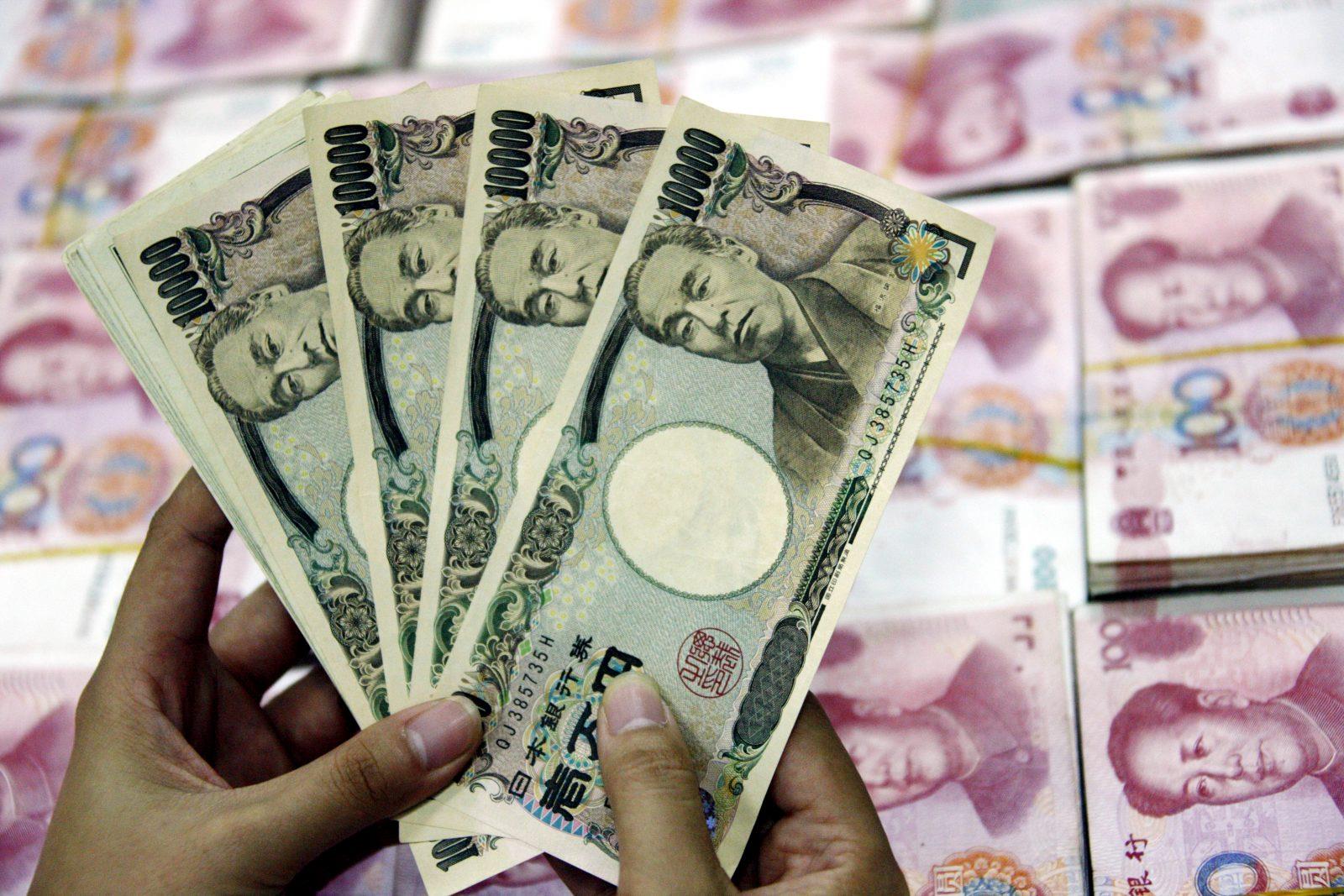(MENAFN- Asia Times)
TOKYO – Wall Street suits, run for the hills.
So far this year, the surging dollar has left a trail of carnage across Asian and European economies, currencies and bourses. Now, it is likely headed for home territory.
Count Michael Wilson, Morgan Stanley's chief US equity strategist, as among those fearing the dollar's rally is creating an“untenable situation” for US stocks and other assets, pointing to similar periods of in the past.
“While hard to predict such events, the conditions are in place,” Wilson notes, referring to sovereign debt issues in 2012, the Lehman Brothers crisis of 2008 and the dot-com crash in 2000.
There is already a chasm between the strong dollar and weak US equities. While the US Dollar Index has risen nearly 20% this year, the S&P 500 Index has fallen 23%, down to the 3,655 level. In Wilson's view, the S&P 500 will reach an“eventual low” of 3,000-3,400 by year-end 2022 or early next year.
“What's amazing,” Wilson says,“is that this dollar strength is happening even as other major central banks are also tightening monetary policy at a historically hawkish pace. If there was ever a time to be on the lookout for something to break, this would be it.”
'Clean shirt' in 'dirty laundry pile' Asia, of course, is well ahead of Morgan Stanley. Governments and markets across the region are scrambling to limit the widening gap between US bond yields and local ones as the Federal Reserve with an aggressiveness not seen since the mid-1990s. As Fitch Solutions headlined a September 26 report on the risk:“The Fed Swings Its Wrecking Ball.”
Analyst Louis-Vincent Gave at Gavekal Research observes that“in a dangerous world, the reason for the US dollar's super-charged performance over the last year has been investors' view that it is the 'cleanest dirty shirt' in a smelly pile of laundry.”
That smelly laundry has piled up far beyond Asia.
“Europe is looking down the barrel of a harsh winter of energy rationing, China continues to fight Covid while confronting a serious real estate slowdown, Britain is embarking on a Keynes-on-steroids economic policy mix, Japan looks wedded to yield curve controls and Russia is simply uninvestable,” Gave says.
Indeed, the dollar's bull run is leaving currency rubble in its path. The yen is at 24-year lows, the euro is touching 20-year lows and the British pound is flirting with parity to the greenback.
“A stronger US dollar is not what the world needs right now,” says Gave.“Already, higher energy costs, whether coal, natural gas or even oil, are making things hard for frontier economies like Sri Lanka, Pakistan, Laos and Egypt. A stronger dollar simply piles on more pain.”

Fuel and power shortages threaten to tilt towards a humanitarian crisis in Sri Lanka. Image: Screengrab / NDTV
And add yet another risk that has just appeared from left field.
New York University's Nouriel Roubini, meantime, warns that markets and the global media“vastly underestimate the severe risks” from the new led by“an extremist, nativist, effectively fascist [Giorgia] Meloni.”
“An already financially wobbly Italy will be on a collision course with the European Union,” he says.“As [with] Greece in 2015, a game of chicken with the EU will escalate.”
And now, the dollar is coming home to roost.
Boomerang toward America Inc
Like Morgan Stanley's Wilson, Gave can't help but“wonder if the US dollar's spike may be the prelude to a serious problem within the US economy that could soon be coming to bite global investors.”
A roaring dollar will hurt the earnings of with sizable foreign operations. Arguably, the last thing struggling global equity markets need in 2022 is a flurry of FX-related profit warnings. That's particularly so for marquee-caliber names like Apple, Google and Microsoft after bellwethers like FedEx, Ford and others veer in that direction.
Morgan Stanley reckons that every 1% change in the Dollar Index negatively impacts profits by 0.5%. As such, Wilson says, fourth-quarter S&P 500 earnings are confronting roughly 10% headwinds from a stronger dollar on top of soaring input costs and waning consumer demand. The sharply negative reaction to FedEx's recent profit warning suggests markets aren't ready for what's to come.
Indeed, says economist Michala Marcussen at Societe Generale,“a strong dollar tantrum could be a more worrying scenario than a Fed tightening tantrum.”
True, today's turmoil is not all the dollar's doing.
Long before US Federal Reserve chairman Jerome Powell's tightening cycle began, the Bank of Japan was driving down the yen. Well before surged to 40-year highs, European economies were walking in place, post-Brexit Britain was struggling to find its way and China's“zero-Covid” obsession was sabotaging growth.
Yet as the dollar's advance pulls more and more capital away from economies large and small, strains are increasing.
Dollar risk spirals up “As the rest of the world crumbles, everyone is unwinding massive risky bets which is fueling the dollar rally,” says analyst Edward Moya at OANDA.
Last week, Moya adds, it seemed unlikely markets would see a coordinated intervention. But, he says,“the FX market is getting dangerously close to having too many extreme positions against the pound and euro, while many wait to see what the People's Bank of China allows to happen with the yuan. Currency traders know to expect the unexpected and if pound parity quickly becomes a real thing, some coordinated action could easily be justified.”
In the meantime,“the upward pressure on the dollar“is a for commodities,” says Gary Ross, chief executive officer of Black Gold Investors LLC. He adds that OPEC's recent production cuts aren't helping things.“The supply-demand balance has caught up and, as we're entering the fourth quarter, we're building stocks.”
Another problem for the US is that the Fed isn't done tightening. Having missed opportunities to get a jump on surging inflation in 2021, Powell's team is now scrambling to catch up.
As a result,“the dollar is experiencing its largest valuation overshoot since the 1980s,” says analyst George Saravelos at Deutsche Bank.“Amidst extreme volatility, a global chorus of discomfort is slowly building.”
Nowhere more so than in Japan, where the yen has lost nearly 26% of its value this year.

The almighty US dollar is pressuring both the yen and the yuan. Photo: AFP Yen plunges, yuan wobbles That has importing“bad” inflation thanks to elevated oil and food prices. Last week, the Ministry of Finance intervened in currency markets to prop up the yen for the first time since 1998. Though the yen is marginally firmer, its low levels are still raising concerns at BOJ headquarters.
The yen, notes economist Carlos Casanova at Union Bancaire Privée, is“the worst performing currency in Asia. As a result, many hedge funds and asset managers have built up large short positions against the yen.” National inflation soared to 3% in August year on year, up from 2.6% in July.
“Although domestic demand is picking up, most of the upside pressure can be traced back to a weaker yen,” Casanova notes.“This has, in turn, exacerbated imported inflation. Despite these pressures, the BOJ seems adamant to keep monetary policy settings on hold, citing subdued core inflation and external growth headwinds. Against this backdrop, we expect that BOJ will continue to step up its interventionist rhetoric and can't exclude the possibility of additional bouts of volatility.”
That could increase pressure on Beijing to let the yuan's decline continue and perhaps accelerate. President Xi Jinping is under growing pressure to hasten growth. And even though China's trade surplus may top $1 trillion this year, downward pressure on the yuan is being overwhelmed by .
“Despite the record high trade surplus, the yuan is under strong depreciation pressure against the US dollar,” says Larry Hu, Macquarie Bank's chief China economist.
Hu argues that the value of the mainland's goods trade surplus converted back into yuan, the so-called conversion ratio, has fallen to just 36% in the first eight months of 2022 versus 57% a year earlier. Xi's months-long Covid lockdown in Shanghai exacerbated the decline.
Analyst Lauren Gloudeman at Eurasia Group notes that Beijing“has been reluctant to allow major or rapid weakness in the currency given concerns that depreciation would reinforce capital outflows. But because US dollar strength, rather than fundamental renminbi weakness, has been the key source of downside pressure, authorities have allowed the currency's value to breach the psychological level of 7 to the dollar.”
At this point, Gloudeman adds,“capital outflows risks will be the main concern if the PBOC considers rate cuts in the fourth quarter to spur growth.”
She notes that government adviser Yu Yongdong argues, in a September 20 op-ed in the influential financial newspaper Caixin, that China should keep the yuan as flexible as possible and prioritize growth with loose fiscal and monetary policies while tightening regulations to prevent .

A clerk counting yuan and US dollar notes at a bank. Photo: AFP
Meanwhile, the effects of an overly muscular dollar are clearly boomeranging back Wall Street's way at a moment when US bourses are firmly in bear-market territory.
As the dollar strengthens, says strategist Sam Stovall at CFRA Research,“foreign revenues are going to translate into fewer dollars. Those earnings are going to come in lower.”
As weaker earnings translate into lower equity valuations, the fallout for US confidence and economic growth won't be far behind.
Follow this writer on Twitter
MENAFN28092022000159011032ID1104938128